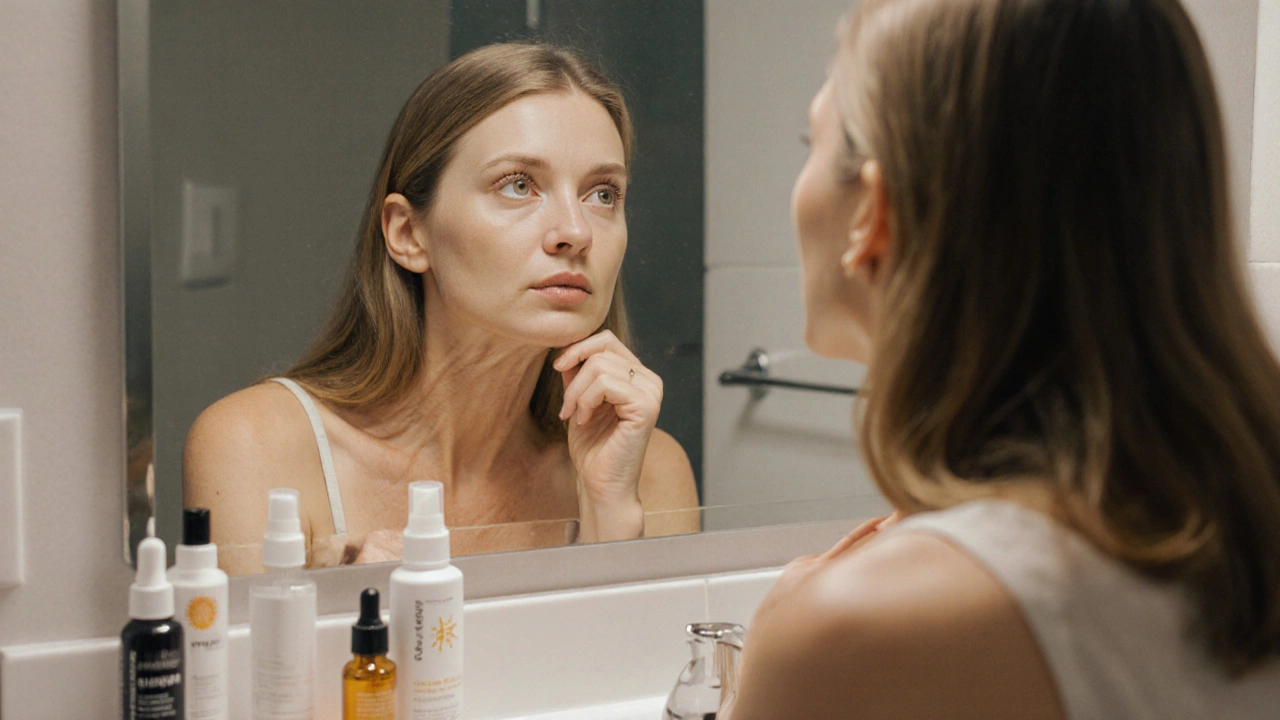Facial Aging: What Causes It and How to Slow It Down
When we talk about facial aging, the natural process of skin changes over time, including wrinkles, loss of volume, and uneven texture. Also known as skin aging, it’s not just about looking older—it’s about how your skin’s structure breaks down, and what you can do to support it. This isn’t something that happens overnight. It’s a slow, steady process shaped by your genes, lifestyle, and the environment. You might notice fine lines around your eyes in your late 20s, deeper wrinkles in your 40s, and a loss of firmness in your 50s. But here’s the thing: facial aging isn’t just about time. It’s about how your skin is treated every day.
The biggest culprit behind visible aging? collagen loss, the decline of a protein that keeps skin plump and elastic. Your body makes less collagen after 25, and by 40, you’ve lost about 25% of it. Sun exposure, smoking, sugar, and poor sleep speed this up. Then there’s skin aging timeline, the predictable pattern of changes your skin goes through at different ages. In your 30s, it’s often dryness and dullness. In your 40s, deeper lines and sagging appear. By your 50s and beyond, hormonal shifts thin the skin even more. Knowing where you are on this timeline helps you pick the right products—not just expensive ones, but ones with real ingredients like retinol, vitamin C, and peptides.
What you eat, drink, and apply matters. Studies show that people who drink enough water, wear sunscreen daily, and avoid processed sugar tend to show fewer signs of aging. Topical treatments work best when they’re consistent. A simple routine with sunscreen in the morning and a retinoid at night does more than a dozen fancy serums used sporadically. And don’t forget sleep—your skin repairs itself while you rest. If you’re tossing and turning, your skin pays the price.
There’s no magic cure, but there are smart steps. You don’t need to spend hundreds on a facial to see results. What you need is clarity. Below, you’ll find real guides that break down what actually works: how to fix sagging skin with diet, which drinks help your skin look younger, why some anti-aging products cost so much, and how to build a routine that fits your life—not your Instagram feed. Whether you’re in your 30s and just starting to notice changes, or you’re over 50 and looking for a simpler, more effective approach, these posts give you straight answers—not fluff.

